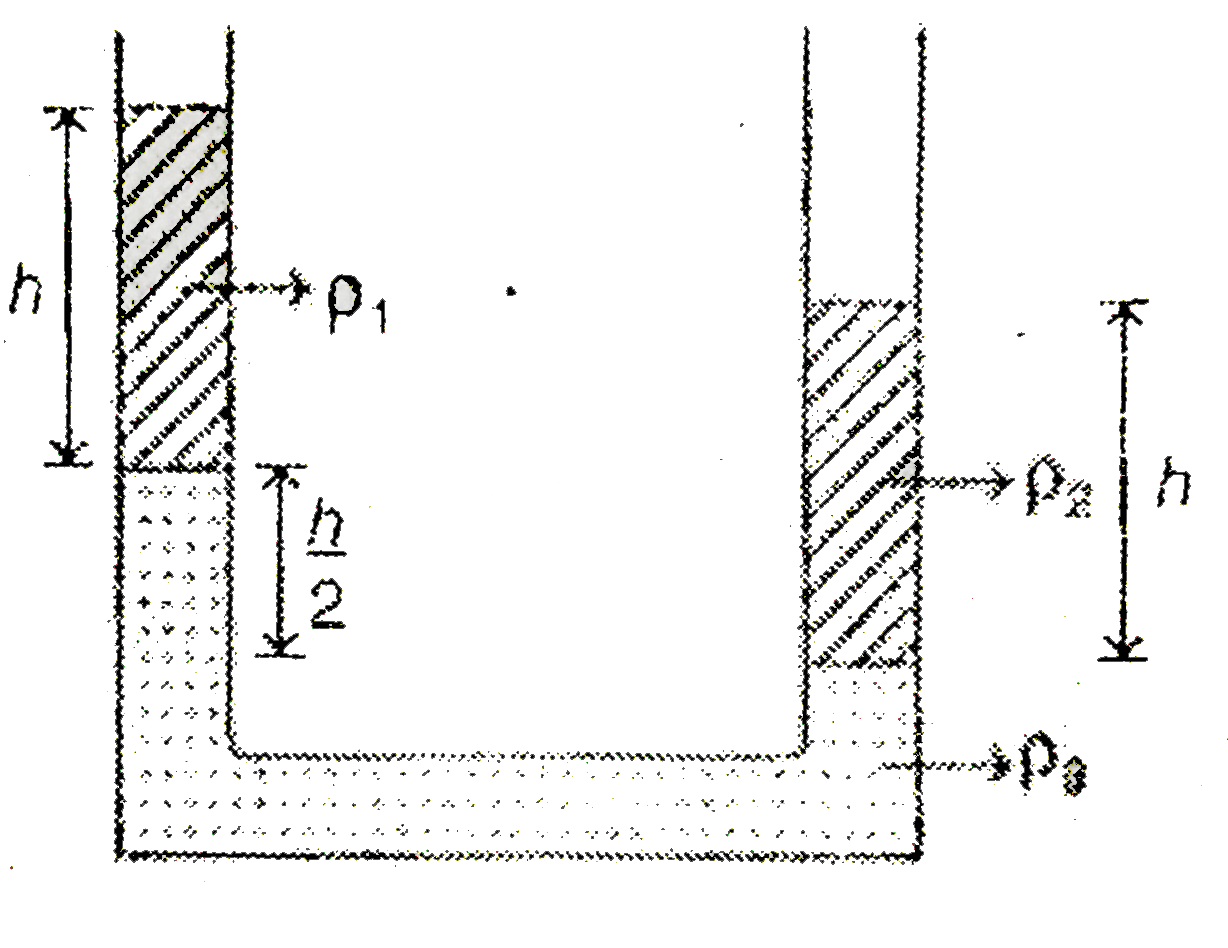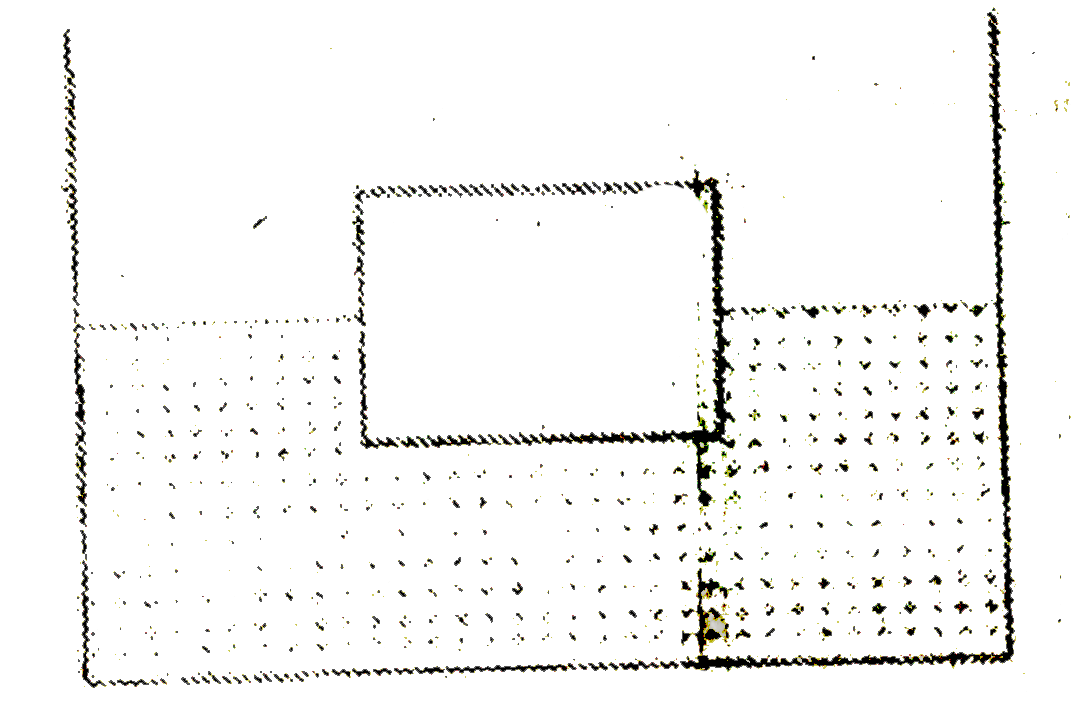Complete Solutions to More than one option is correct of chapter PROPERTIES OF MATTER of Class 11 book with complete answers and questions
| Class 11 | PHYSICS |
| Chapter | PROPERTIES OF MATTER |
| DC PANDEY MASTER PROBLEM PACKAGE | More than one option is correct |
| Number Of Questions | 21 |
| Academic Year | 2023-24 |
A metallic sphere weighs `210g` in air, 180 g in water and 120 g in an unknown liquid. Find the density of metal and of liquid.
View SolutionWater is being poured in a vessel at a constant rate `alpha m^(2)//s`. There is a small hole of area a at the bottom of the tank. The maximum level of water in the vessel is proportional to
View SolutionEqual volumes of a liquid are poured in the three vessels `A, B` and `C (h_(1) lt h_(2) lt h_(3))`. All the vessels have the same base area. Select the correct alternatives.

View SolutionA tank is filled upto a height h with a liquid and is placed on a platform of height h from the ground. To get maximum range `x_(m)` a small hole is punched at a distance of y from the free surface of the liquid. Then

View SolutionA small solid ball of density `rho` is held inside at point A of a cubical container of side L, filled with an ideal liquid of density `4rho` as shown in the figure. Now, if the container starts moving with constant acceleration a horizontally and the ball is released from point A simultaneously, then choose from following the correct option(s)

View SolutionA metallic wire of length `l` is held between two rigid supports. If the wire is cooled through a temperature t. (Y= Young's modulus of elasticity of wire, `rho=` density, `alpha=` thermal coefficient of linear expansion). Then the frequency of oscillation is proportional to
View SolutionA cylinder is floating in two liquids as shown in figure. Choose the correct options.

View Solution_S01_070_Q01.png)
Some pieces of impurity (density `=rho`) is embedded in ice. This ice is floating in water (density `rho_(w))`. When ice melts level of water will
(a). Fall if `rhogtrho_(w)`
(b). Remain unchanged if `rholtrho_(w)`
(c). fall if `rholtrho_(w)`
(d). rise if `rhogtrho_(w)`
View SolutionThree different liquids are filled in a U-tube as shown in figure. Their densities are `rho_(1), rho_(2)` and `rho_(3)` respectively. From the figure we may conclude that

View SolutionA block is floation in a liquid as shown in figure. Suppose w= weight of block, p=pressure at bottom of block and F= upthrust on the block. No suppose container starts moving upward with some positive acceleration. The new values are suppose w, p' and F'. Then

View SolutionFor the different materials it is given that `Y_(1) gt Y_(2)` and `B_(1) lt B_(2)`. Here, Y is Young's modulus of elasticity and B, the Bulk modulus of elasticity. Then we can conclude that
View SolutionA load w is suspended from a wire of length `l` and area of cross-section A. Change in length of the wire is say `Deltal`. Change in length `Deltal` can be increased to two times by increasing
View SolutionThe viscous force acting on a solid ball of surface area. A moving with terminal velocity v is proportional to
View SolutionAn oil drop falls through air with a terminal velocity of `(5xx10^(-4))/(sec)` viscosity of air is `1.8xx10^(-5)(N-s)/(m^(2))` and density of oil is 900 kg `m^(3)` neglect density of air as compared to that of oil.
View SolutionThere are two holes on a water tank as shown in figure. Area of hole 2 is two times that of area of hole 1. Suppose v is the speed of liquid coming out and Q the volume of liquid flowing per second. Then

View SolutionA cylindrical vessel of `90 cm` height is kept filled up to the brim. It has four holes `1,2, 3` and `4` which are, respectively, at heights of `20 cm, 30 cm, 40 cm` and `50 cm` from the horizontal floor `PQ`. The water falling at the maximum horizontal distance from the vessel comes from

View SolutionA block of density `2000kg//m^3` and mass 10kg is suspended by a spring stiffness `100N//m`. The other end of the spring is attached to a fixed support. The block is completely submerged in a liquid of density `1000kg//m^3`. If the block is in equilibrium position.
View SolutionIf for a liquid in a vessel force of cohesion is twice of adhesion
View SolutionWhen a capillary tube is dipped into a liquid, the liquid neither rises nor falls in the capillary.
View SolutionThe wires `A` and `B` shown in Fig. are made of the same material and have radii `r_(A)` and `r_(B)`, respectively. The block between them has a mass `m`. When the force `F` is `mg//3`, one of the wires breaks. Then

View SolutionA small block of wood of density `0.4xx10^(3)kg//m^(3)` is submerged in water at a depth of `2.9m`. Find
(a) the acceletation of the block towards the surface when the block is released and
(b) the time for the block to reach the surface, Ignore viscosity.
View Solution
More than one option is correct questions and complete solutions for chapter PROPERTIES OF MATTER of DC PANDEY ENGLISH of Class 11